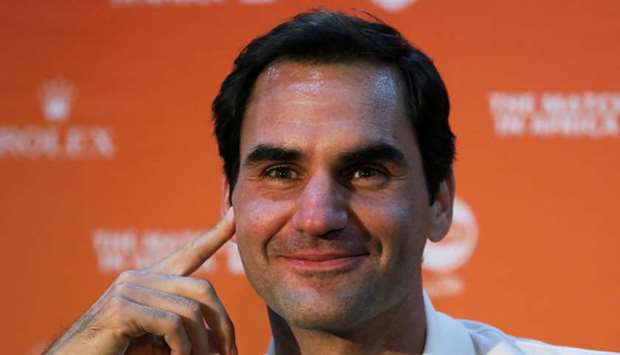Serena Williams’ quest for the record books has been well documented. Unquestionably one of the greatest to ever pick up a tennis racket, after winning the Australian Open in 2017 while pregnant, Williams was one major away from tying Margaret Court’s record 24 Gland Slam singles titles.
Then came the hiatus. Williams missed four Grand Slams before her comeback, but in 2018 she reached the fourth round of the French Open and then the finals at Wimbledon and the US Open. In eight attempts, she has reached four finals.
She remains so close to that record. It always seemed inevitable that she’d reach it. And now, as her runway to that milestone shortens at age 38, the tennis world and sports at large are taking a necessary pause. Although this means different things for athletes at different stages in their careers, for Williams and Roger Federer, it might put some goals too far out of reach.
“They won’t have 20 more opportunities,” Hall of Famer Martina Navratilova said. “They’ll have a couple more years and then father time will catch up with you and that goes for Serena and Roger, but also Novak (Djokovic) and Rafa (Nadal).” We had it so good. Tennis was populated with a mix of greats and younger talents, and the last decade has produced some of the greatest matches and rivalries ever. It’s hard to think that era could have a premature end.
Bit by bit, the spring sports calendar is eroding as an effect of the novel coronavirus pandemic. There are cancellations and postponements, with uncertainty and a sense of foreboding about what may lie beyond the end of May.
This week Wimbledon, the tennis tournament and the third major of the year, announced that it will be cancelled for the first time since World War II. The French Open was rescheduled from late spring to September. Meanwhile in New York, the indoor space at the USTA Billie Jean King National Tennis Center is being converted into a temporary hospital for coronavirus patients. The US Open is not cancelled. Yet the idea the hospital beds will be empty by August 24 when the tournament is set to begin, or for the qualifying tournament the weeks before, seems increasingly unrealistic.
Tennis is not the most important thing here. No less a legend than King said the decision to convert the facility was absolutely suitable given the circumstances. She has always stood for equity and access, even though that means something different here.
But for players like Williams and Federer, what were short-term goals are now medium-term goals, if not longer. There is a rhythm to the tennis year. Small tournaments leading to big ones. Training regiments that put players in peak physical shape leading into May and late August. An athlete doesn’t usually stay in top shape without a tournament on the horizon; without a training goal on the calendar.
“If I’m Serena or Roger and I want one more Slam and I’m on hold, I kind of liken it to being in a rain delay,” Navratilova said. “You know you’re going to play again you just don’t know when. You have to eat just enough, rest just enough to stay fresh for the match.”
She said there are other ways to train as well, whether it’s looking at film of the players who will likely be top contenders when tennis is back. Rest can be good for veteran players, Federer recently had knee surgery and was set to miss the French anyway, but not like this.
“There is a rest period,” Navratilova said, “but not knowing is weird and you don’t have a timeline.” And athletes at the moment are dealing with the same concerns and uncertainty as the rest of us. What is their income going to look like with cancellations? How do you protect your family? Wealth and fame offer insulation, but it isn’t complete. The bigger challenge might just be keeping up the hunger for another major.
Both Williams and Federer are likely getting a sense of what life after tennis will look like. They may be able to spend more time with their kids – Williams’ daughter Olympia is now 2, while Federer has two sets of twins, ages 5 and 10.
It is hard to know what tennis will look like when it gets back. Air travel may have new restrictions, travel between countries may require health certification or quarantine, and competitions still may require same-day testing for staff and players. Will sponsorships still be there? Will tournaments still be in business? Will cities have the tourism core intact enough to host tournaments?
It’s impossible to know the answers and hard not to project. The sports world that functioned like clockwork before the pandemic may not be the one we emerge back into. It could take years for things to return to normal, and might be contingent on a vaccine, or quick turnaround testing, or economic variables.
All that is out of the control of players like Williams and Federer. But they will likely face a bigger question: If there is a six-month hold on the sport, or longer, will every player return with the same mind-set with which they left?
“Billie Jean always said, ‘Champions adjust,’” Navratilova said.
“This is what you have to do.”

Roger Federer during a media briefing at Cape Town International Airport on February 5, 2020. (Reuters)


